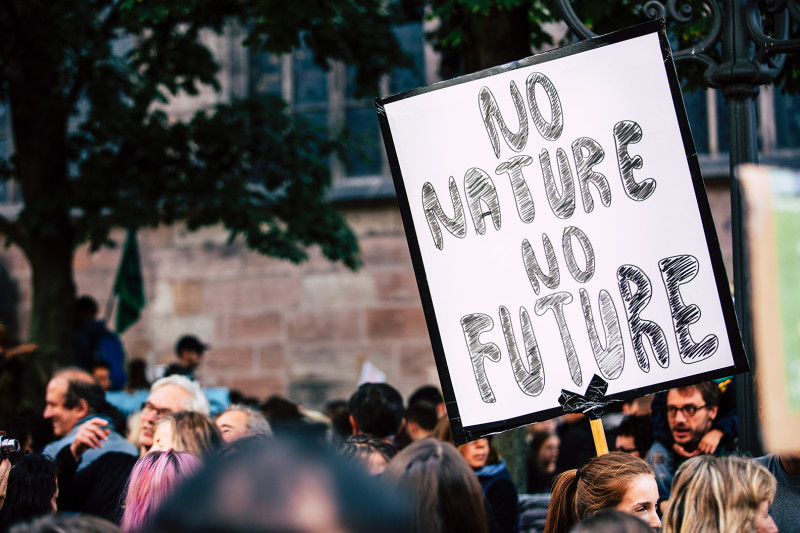There are a lot of factors impacting the running business in 2020 headed into 2021, with the COVID-19 pandemic certainly tops among them. But there is another outside influence that will perhaps have an even more far-reaching and longer-pasting effect on runners worldwide – climate change.
And a recent excellent article on the subject recently appeared in podiumrunner.com that took a look at many of the factors that are impacing the world of running. Written by Molly Hanson, the September 28 piece, titled “4 Ways Climate Change Affects You As a Runner,” cited rising temperatures, extreme weather, degraded air quality and ravaged ecosystems as possibly holding catastrophic consequences for endurance sports.
“One of the most attractive things about running is the simplicity and purity of the sport. It’s a primal, somatic pursuit; all you really need is air to breathe, safe weather, and land to run on. (And, yes, shoes help.),” Hanson writes. “But now we’re rapidly approaching a time when those fundamental requisites are under a grave threat. In fact, climate change has already begun to alter the running industry and its events, and as global temperatures climb to deadly levels transforming and intensifying our climate and weather patterns, we can expect it to feel the impact more directly and frequently.”
The article went on to specifically outline how climate change will affect running.
- Extreme Heat. Perhaps the most obvious way that climate change is bound to adversely impact runners and events is extreme heat. Average global temperatures are climbing, with 2019 ranking in as the hottest year on record. 2020 is currently on track to take that crown as either the warmest or second warmest year in recorded history.
Already we have begun to see the impact of extreme heat on major running events. For example, these days the New York City Marathon is run on the first Sunday of November. But when the event began in 1970, it was run in mid-September. Eventually it was moved to the next-to-last weekend in October before it became too hot to continue to hold it that month as average temperatures have gone up.
“It just gets too warm to run long distances,” the article quotes says Michael Gerrard, founder of Columbia University’s Sabin Center for Climate Change Law and former distance runner. “Certainly in the summer months there are going to be places where it’s just too hot outside to run safely … With climate change we’ll have more intense and longer heat waves so there will be longer periods of time in many parts of the United States and elsewhere in the world where it’s just not safe to run outside.”
- Air Quality. Then, there is the issue of air quality. Otdoor exercise in unhealthy air quality is not encouraged. Over time, as toxins are transferred through the lungs to the bloodstream and circulated throughout our bodies, it can lead to adverse effects of performance and deteriorations in general health.
As toxins continue to be spewed into the atmosphere and unhealthy air quality is exacerbated by rising general temperatures, it’s bound to have a more direct effect on endurance athletes in the coming years
- Severe Weather. Hanson writes that with extreme heat also comes the weather conditions that facilitated the record-breaking hurricane season on the east coast and the historic wildfires that ravaged parts of the west. In those regions where the combination of heat and drought have given way to extensive wildfires, air quality is further impaired and yields conditions that are dangerous for engaging in outdoor activity.
The article cites a time earlier this year when Oregonian runner Colette Richter woke up to ash in her Corvallis home and a strong barbecue smell deriving from a wildfire that was blazing 40 to 50 miles away from the town. Throughout the week, the air quality in her area spiked to an AQI of over 500 multiple times making it extremely unsafe to exercise outside where the air was thick with smoke and ash.
“People were struggling to get their runs in at crowded gyms in addition to having to wear a mask because of COVID,” says Richter in the article. “It was lonely, no one was outside and the smoke covered the city. As runners we try to stay optimistic, but overall it’s tiring and downright depressing.”
- Mass Extinction and Loss of Biodiversity. This is sort of a macro-concept because, as Hanson writes, running is an individual sport, and competitive running culture is at times critiqued for being an insular world, but the reality is that running is intimately dependent on the lives of other beings and natural phenomena.
So runners — whether their terrain is trail, track, or road — are certain to be affected by the biodiversity crisis we are currently experiencing, sometimes referred to as the world’s sixth great extinction. “From the lands we run on to the wildlife we encounter to the food that fuels us to the plants that give us oxygen, the catastrophic decline of nature is bound to hold severe consequences for us, not least of which being eviscerating a sense of beauty, enchantment, and possibly resources from the sport.
The excellent article then goes on the recommend what the running community can do – raise awareness, learn from activists and pressure business and government entities – to assure a future environment suitable for not only running, bu tall outdoor pursuits.
“If the COVID-19 pandemic has taught us anything it’s how disastrous the failure to act in the face of an oncoming, predictable catastrophe can be,” the article concludes. Climate change is an extraordinary complex topic and the fight against it won’t be simple, and it certainly won’t be easy.”
For the full article: https://www.podiumrunner.com/culture/4-ways-climate-change-affects-you-as-a-runner/






